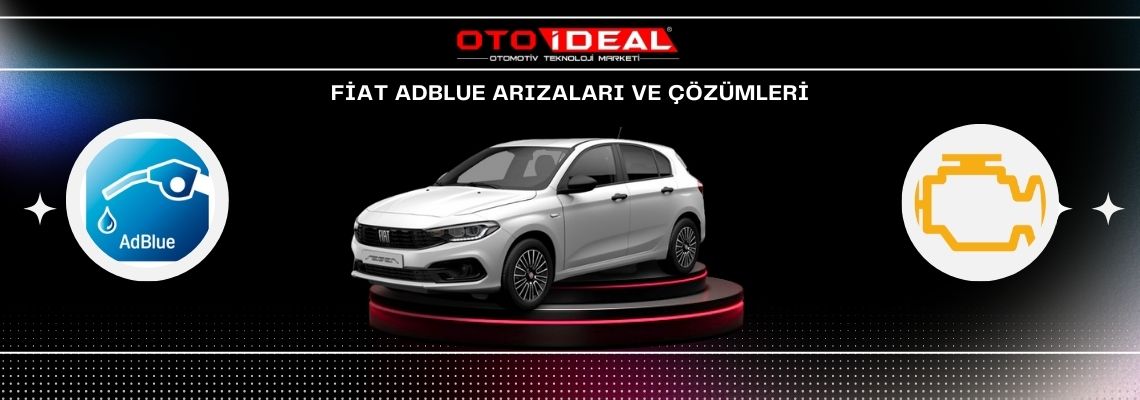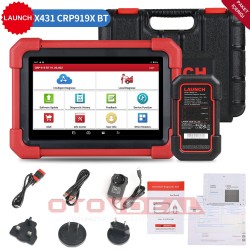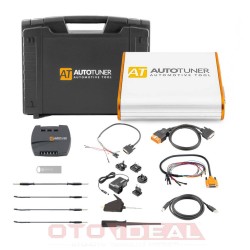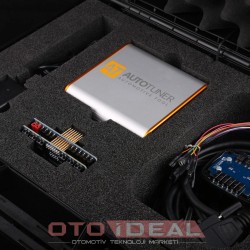
Fiat AdBlue System Warning: What Should You Do?
If you encounter the "Check AdBlue System" warning in models like Fiat Tipo, Doblo, Ducato, Fiorino, or other similar models, this usually indicates an issue with your vehicle's emissions control system. The common causes of this warning include low AdBlue levels, sensor failures, or a problem with the SCR (Selective Catalytic Reduction) system. What causes AdBlue failures? The AdBlue fluid running low, using low-quality fluid, or a failure in system components can lead to such warnings. Start by checking the AdBlue level and refilling if necessary. If the warning persists, use an auto diagnostic tool to check for error codes in the system. This tool will help identify the root cause of the problem and guide you to the right repair process. If left unresolved, this issue can negatively affect your vehicle's emission performance and overall efficiency.
How to Turn Off the AdBlue Light?
In Fiat models like the Tipo, Doblo, Ducato, Fiorino, and others, the AdBlue warning light often indicates that the AdBlue fluid level is low. However, this warning light may not always go away with a simple refill. To prevent more severe issues like the vehicle not starting due to AdBlue failure, you should first check the AdBlue level and refill as needed. If the AdBlue light remains on, there may be an issue with the fluid's quality. Low-quality or degraded AdBlue fluid can cause blockages in the SCR system. What does AdBlue system failure mean? This suggests that the system is not processing the fluid correctly or is unable to control emissions properly. How to turn off the AdBlue light? If the light stays on even after replacing the fluid, try using an AdBlue system reset tool to reset the system. If the light persists, it may indicate a more serious issue, and a professional inspection might be necessary.
AdBlue Full But Still Showing Warning: Causes and Solution
If your Fiat Tipo, Doblo, Ducato, Fiorino, or similar models show an AdBlue warning even when the tank is full, this usually points to an issue with the fluid's quality or another system fault. What causes AdBlue failures? AdBlue fluid crystallization, degradation, or sensor failures in the SCR system are common causes of such warnings. Start by draining the old fluid and refilling with fresh, high-quality AdBlue. If the warning doesn't clear, there might be an issue with the system's sensors or injectors. In this case, use an auto diagnostic tool to identify the faults in the system and perform the necessary repairs. How to fix AdBlue failure? If the issue isn't related to the fluid's quality, it could be a problem with the sensors or injectors, which may need to be replaced or repaired. If these issues persist, taking your vehicle to an authorized service center is the best course of action.
Why Do DPF Failures Occur and How to Solve Them?
In Fiat models like the Tipo, Doblo, Ducato, and Fiorino, the DPF (Diesel Particulate Filter) system is designed to trap harmful particles from diesel engines and reduce emissions. However, over time, this filter can become clogged, leading to DPF failures. Why do DPF failures occur? Common causes include frequent short trips, using low-quality fuel, and not changing the engine oil on time. Short trips prevent the DPF from regenerating (self-cleaning), leading to increased deposits in the filter.
How to solve DPF failure? The first step is to initiate the DPF regeneration process by driving the vehicle at high speed for an extended period. This process helps burn off the accumulated particles, cleaning the DPF. If this method doesn’t work, professional cleaning or replacement of the DPF may be necessary. In some cases, you may need to use an auto diagnostic tool to clear error codes and manually start regeneration. If the DPF is completely clogged and cannot be cleaned, replacing the filter may be the best solution.
Why Do EGR Failures Occur and How to Solve Them?
In Fiat models like the Tipo, Doblo, Ducato, and Fiorino, the EGR (Exhaust Gas Recirculation) valve helps reduce emissions by recirculating a portion of the exhaust gases back into the combustion chamber. However, over time, the EGR valve can become clogged with carbon deposits, leading to failures. Why do EGR failures occur? The most common causes include using low-quality fuel, frequent short trips, and a lack of regular maintenance. These issues cause the valve to become clogged with carbon, preventing it from functioning correctly.
How to solve EGR failure? The first step may involve cleaning the EGR valve. A carbon cleaning process can remove the deposits in the EGR valve, allowing it to function properly again. If the valve is severely clogged or damaged, it may need to be replaced. Use an auto diagnostic tool to check for error codes and assess the condition of the EGR valve. Proper functioning of the EGR system is crucial for controlling your vehicle's emissions, so it’s important to resolve any failures promptly.
What Are the AdBlue, DPF, and EGR Error Codes in Fiat Vehicles?
In Fiat vehicles, some common error codes related to the AdBlue, DPF (Diesel Particulate Filter), and EGR (Exhaust Gas Recirculation) systems that you might encounter with an auto diagnostic tool include:
AdBlue Error Codes
- P20E8: AdBlue pressure too low
- P20F6: AdBlue level sensor fault
- P2033: AdBlue heater malfunction
- P2047: AdBlue injector circuit fault
- P207F: SCR (Selective Catalytic Reduction) system efficiency low
- P2200: NOx sensor circuit fault (pre-sensor)
- P2202: NOx sensor circuit low (pre-sensor)
DPF Error Codes
- P2002: DPF efficiency low (particulate filter clogged)
- P242F: DPF overloaded
- P2453: DPF pressure sensor fault
- P2458: DPF regeneration duration too long
- P2463: DPF excessive particulate accumulation
EGR Error Codes
- P0400: EGR flow malfunction
- P0401: EGR flow insufficient
- P0402: EGR flow excessive
- P0403: EGR valve circuit fault
- P0404: EGR valve malfunction (excessive current)
- P0405: EGR sensor circuit low
- P0406: EGR sensor circuit high
These error codes indicate a problem within the vehicle's emissions control systems and can typically be detected using auto diagnostic tools. Each code points to a specific component or system issue, helping vehicle owners or technicians identify the root cause of the problem.
Proper diagnosis and timely repairs are essential to maintaining the vehicle's emissions performance and overall operational efficiency.


-75x75w.jpg)


-75x75w.jpg)










-75x75.jpg)





-75x75w.png)


-250x250w.png)
-250x250w.png)




Leave a Comment